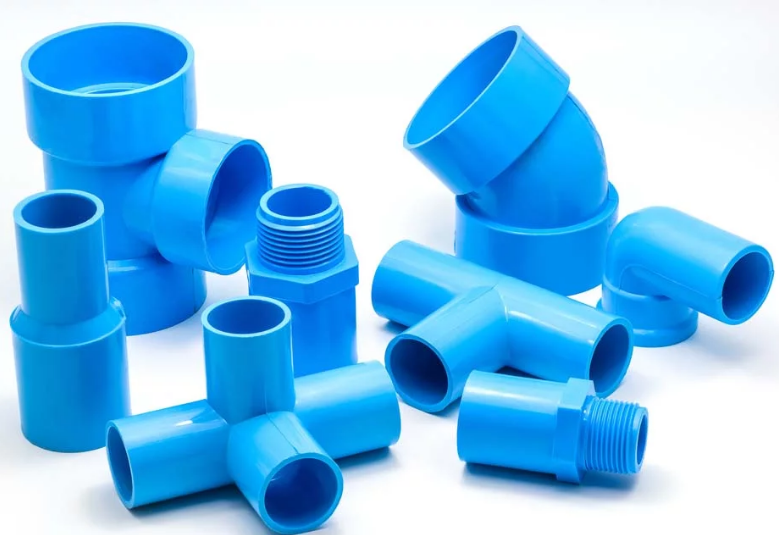Yes, PVC (Polyvinyl Chloride) is commonly used in injection molding to create a wide range of plastic products.
PVC Injection Molding Basics
Properties of PVC as a Molding Material
Polyvinyl Chloride (PVC) is a popular thermoplastic used in injection molding due to its versatile properties:

Durability: PVC products are known for their long lifespan, often exceeding 10-15 years without significant degradation.
Chemical Resistance: It resists acids, alkalis, and other chemicals, making it ideal for industrial applications.
Flexibility: PVC can be made more flexible with the addition of plasticizers.
Comparison with Other Injection Molding Materials
PVC is often compared with materials like Polyethylene (PE) and Polystyrene (PS) in injection molding:
Heat Resistance: PVC has a higher heat resistance than PE, but lower than PS.
Strength: PVC offers better tensile strength compared to PE but is less rigid than PS.
Cost: PVC is generally more cost-effective than PS but similarly priced to PE.
Environmental Impact: PVC is less eco-friendly due to chlorine content, unlike PE and PS which are more recyclable.
For a comprehensive understanding of PVC’s properties and uses in injection molding, the Wikipedia page on Polyvinyl Chloride is a valuable resource.
PVC Injection Molding Basics
Properties of PVC as a Molding Material
PVC, or Polyvinyl Chloride, is widely recognized in injection molding for its distinctive properties:
Durability: Known for its long lifespan, typically exceeding 15 years.
Chemical Resistance: Resists a wide range of chemicals, making it ideal for industrial applications.
Cost-Effectiveness: Generally, PVC costs around $1-$1.5 per pound, offering a budget-friendly option in the world of plastics.
Flexibility: With plasticizers, PVC’s flexibility can be enhanced for various applications.
Comparison with Other Injection Molding Materials
PVC stands out when compared to other materials like Polyethylene (PE) and Polystyrene (PS):
Heat Resistance: PVC handles higher temperatures better than PE, but not as well as PS.
Strength and Rigidity: PVC offers better tensile strength compared to PE but falls behind the rigidity of PS.
Cost Comparison: While PVC is more cost-effective than PS, it is competitively priced against PE.
Environmental Impact: PVC’s environmental footprint is a concern due to its chlorine content, whereas PE and PS are more recyclable.
Explore the Wikipedia page on Polyvinyl Chloride for more comprehensive details on PVC.
Design Considerations for PVC Injection Molding
Mold Design for PVC Materials
Effective mold design is essential for PVC injection molding:

Heat Resistance: Molds must endure PVC’s typical melting temperature, usually around 160°C to 210°C.
Ejection System: Efficient ejection mechanisms are crucial to prevent damage to the finished product.
Runner System Design: Proper runner system ensures balanced material flow, reducing defects.
Proper mold design significantly affects the quality of PVC molded products.
Shrinkage and Warping in PVC Products
Managing shrinkage and warping is a key aspect:
Shrinkage Rate: PVC typically experiences 0.2% to 2.0% shrinkage.
Mold Design Adjustment: Molds are often oversized to compensate for PVC shrinkage.
Cooling Rates: Uniform cooling is crucial to minimize warping, especially in thicker sections.
Addressing these factors can greatly improve the dimensional accuracy and quality of PVC products.
Surface Finish and Texturing Techniques
Surface aesthetics are vital in PVC molding:
Texturing: Techniques like sandblasting or acid etching provide various textures.
Polishing: High-gloss finishes require polished molds.
Coatings: Additional surface treatments can enhance appearance and durability.
These techniques enhance the visual and tactile quality of PVC products.
For further insights, visit the Wikipedia page on Injection Molding.
Optimizing PVC Injection Molding Parameters
Optimizing the parameters in PVC injection molding is crucial for efficiency and quality. Below are the key settings and their impacts on the molding process:
Temperature and Pressure Settings
| Parameter | Description | Optimal Range | Impact on Molding Process |
|---|---|---|---|
| Mold Temperature | Temperature of the mold cavity | 160°C to 210°C | Ensures smooth flow and proper solidification |
| Injection Pressure | Pressure for injecting PVC | 500 to 1500 psi | Affects the filling and packing of the mold |
Proper temperature and pressure settings are essential for reducing defects and ensuring the integrity of the molded product.
Injection Speed and Holding Time Adjustments
| Parameter | Description | Optimal Range | Impact on Molding Process |
|---|---|---|---|
| Injection Speed | Speed at which PVC is injected | Moderate to Fast | Influences the filling of the mold and quality |
| Holding Time | Time the pressure is held | Depends on Size | Ensures proper packing and cooling of the material |
Adjusting injection speed and holding time can significantly affect the quality and efficiency of the molding process.
Factors Affecting the Quality of PVC Products
| Factor | Description | Impact on Quality |
|---|---|---|
| Material Quality | Quality of PVC resin and additives | High-quality materials lead to fewer defects |
| Mold Design | Design and condition of the mold | Directly affects product accuracy and finish |
| Machine Maintenance | Regular upkeep of molding machine | Ensures consistent quality and reduces downtime |
Understanding and optimizing these factors can greatly enhance the overall quality of PVC injection molded products.
For more detailed information on PVC injection molding, explore the Wikipedia page on Injection Molding.




